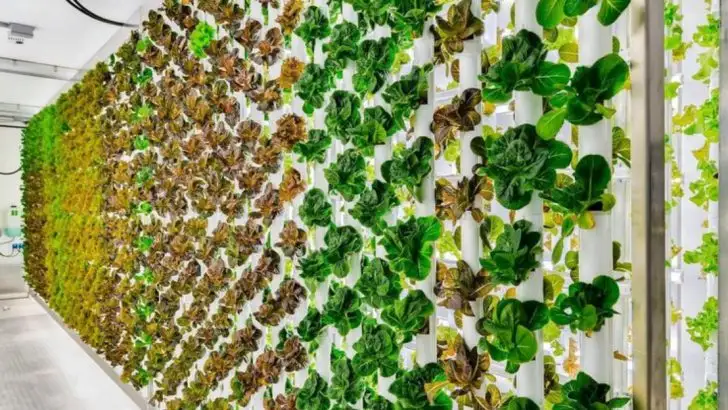A therapeutic garden is more than just a beautiful space—it’s a haven for relaxation, mindfulness, and healing. Whether you have a large backyard, a small balcony, or even an indoor nook, you can create a peaceful retreat filled with soothing greenery and sensory elements.
In this article, we share 15 ideas to turn any space into a therapeutic garden. From aromatic plants and calming water features to cozy seating and meditative pathways, these ideas will help you design a space that reduces stress, boosts well-being, and connects you with nature. No matter the size of your space, these simple yet effective touches can make it feel like a true sanctuary!
Vertical Gardens

Wall spaces can be more than just structural; they serve as canvases for vibrant vertical gardens. Imagine a tapestry of greenery and blooms cascading down your balcony or patio walls. It’s a great way to maximize space without sacrificing style or serenity. Choose plants that complement each other in color and texture to create a visually appealing palette. A mixture of ferns and flowering plants can add both lushness and pops of color. Vertical gardens are not just about aesthetics; they improve air quality and can help create a sense of calm and relaxation.
Container Herb Gardens
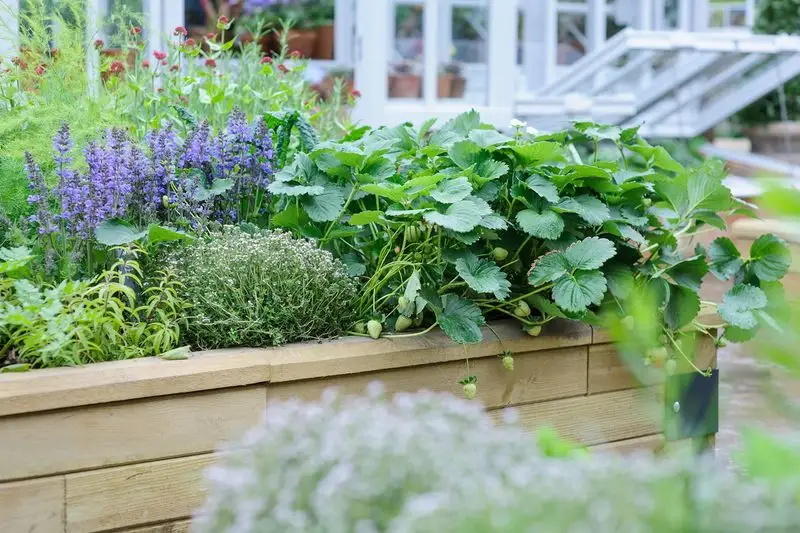
Incorporating a container herb garden can be both practical and soothing. Having fresh herbs like mint, basil, or rosemary within arm’s reach not only enhances your culinary creations but also fills your space with delightful fragrances. Containers allow for flexibility, fitting in any nook or cranny with sufficient light. As you nurture these plants, you’ll find a therapeutic rhythm in the daily care routine. The tactile engagement and visual beauty of herb gardens provide a sensory delight, transforming your space into a fragrant oasis. They also serve as a constant reminder of nature’s simple pleasures.
Water Features
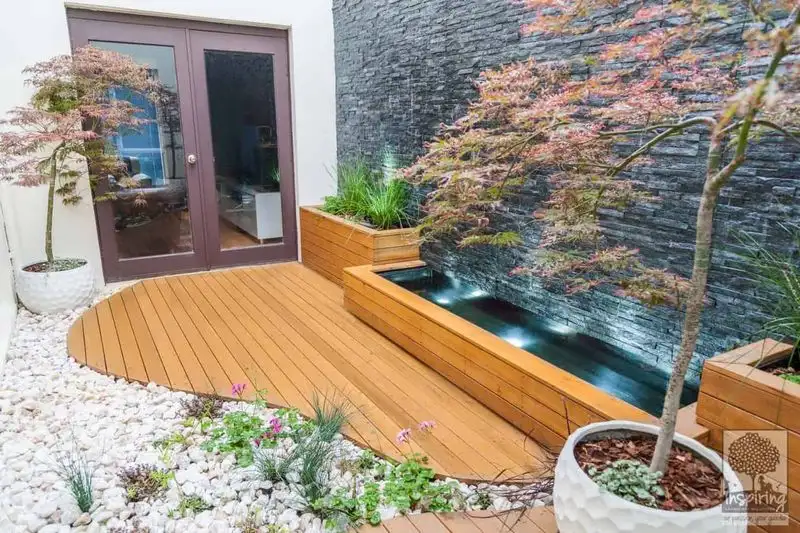
The gentle sound of trickling water can elevate any space into a serene retreat. Integrating a water feature, like a tabletop fountain, introduces a tranquil auditory element that soothes the mind. These features can be as small or large as your space allows, from a simple bowl with water lilies to a more elaborate setup with stones and aquatic plants. The visual and auditory elements of water features promote relaxation and meditation. Placing it in a quiet corner can create a focal point that invites introspection and calm, making your environment feel like a peaceful sanctuary.
Sensory Paths

Crafting a sensory path is an innovative way to engage with your garden on multiple levels. By using a variety of materials such as pebbles, moss, and bark, you can create a tactile journey that stimulates the senses. Walking barefoot over these textures can be grounding, offering a physical connection to nature. It’s ideal for small yards or patios, providing both aesthetic appeal and a meditative experience. Each step on this path can become a moment of mindfulness, drawing attention away from the hustle of everyday life. Sensory paths invite exploration and contemplation.
Hanging Planters
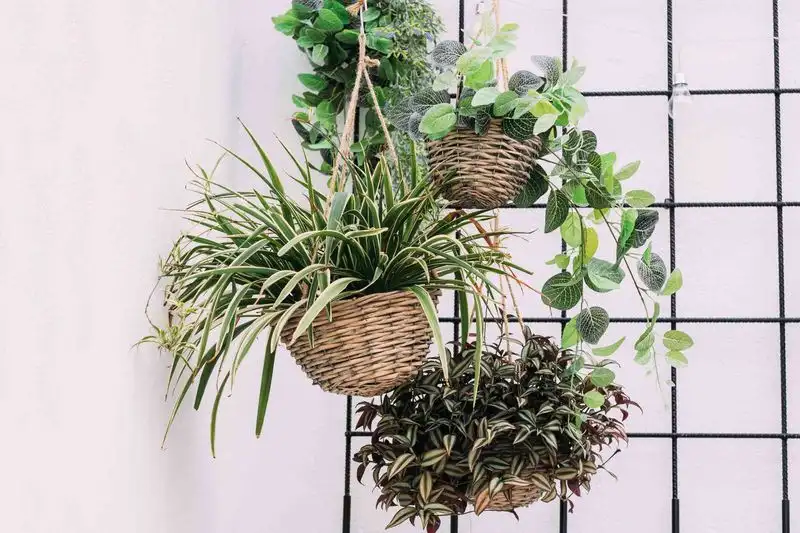
Hanging planters offer a unique opportunity to embellish any space with nature’s beauty, without encroaching on ground area. They’re perfect for balconies, patios, or even indoors, where floor space is limited. Choose trailing plants like ivy or vibrant flowers such as petunias to add layers of color and depth. The gentle sway of these plants in the breeze can be incredibly soothing, creating a dynamic, ever-changing garden. As these plants grow and change, they bring a sense of life and movement, offering a peaceful escape through the beauty of suspended nature.
Reflective Surfaces
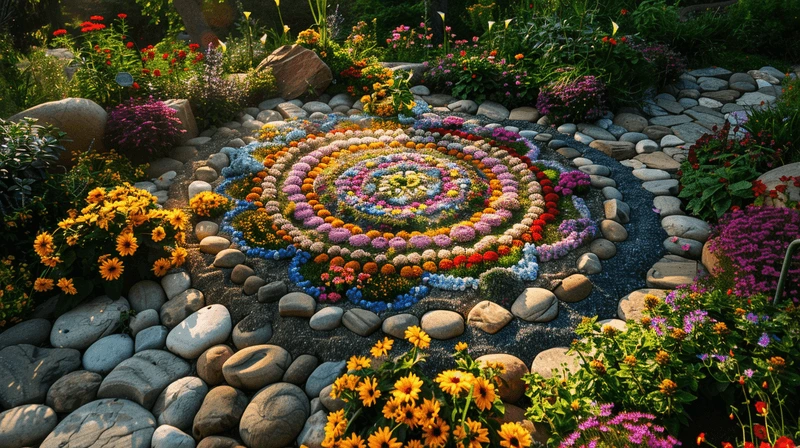
Reflective surfaces can dramatically enhance the perception of space in a garden. Mirrors or polished stones can reflect the natural beauty of your plantings and the sky, making an area feel larger and more immersive. Strategically placed, they catch light and create interesting visual effects, adding depth to any garden. These surfaces also serve a practical purpose by redirecting sunlight, which can benefit plants in shaded spots. The reflections can invite a sense of wonder and curiosity, encouraging you to see your garden from new perspectives. It’s a simple yet effective way to amplify natural beauty.
Aromatic Plants
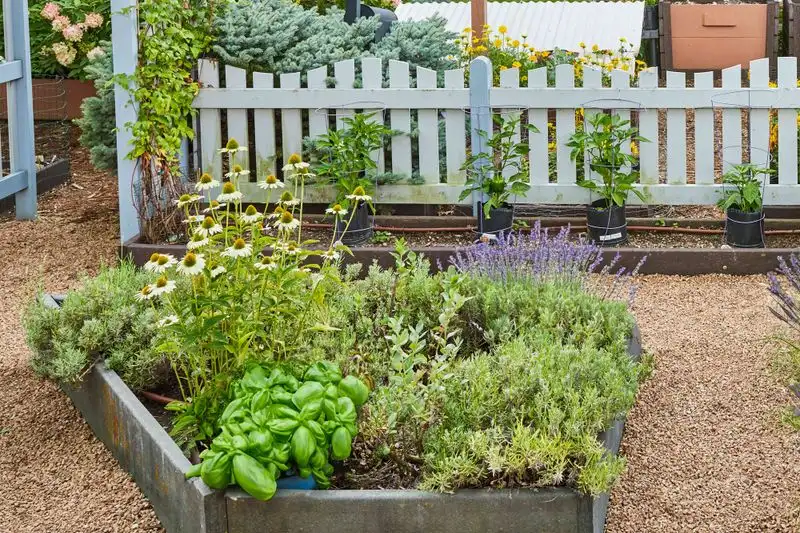
Aromatic plants bring more than just visual appeal; they engage the senses in a multi-dimensional way. Imagine inhaling the soothing scents of lavender, jasmine, or chamomile as you relax in your garden space. These plants are not only beautiful but also known for their calming properties. Position them near seating areas or windows where their fragrance can drift indoors. Aromatic plants can transform a simple garden into a sensory retreat, where scent becomes a key feature of the experience. Their natural perfumes linger in the air, providing a continuous source of comfort and tranquility.
Zen Gardens
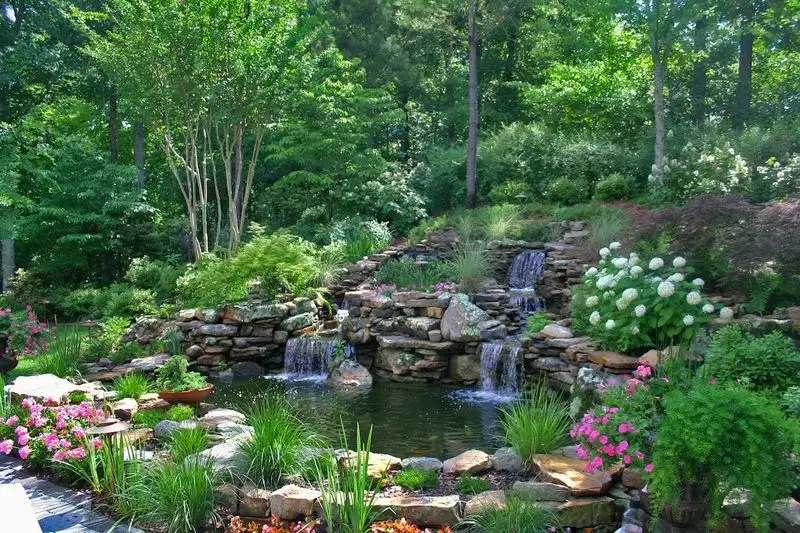
Zen gardens, characterized by their minimalist design and contemplative nature, offer a peaceful retreat even in the smallest spaces. Their simplicity—sand, rocks, and perhaps a bonsai—promotes a sense of calm and order. Raking patterns in the sand can be a meditative activity, providing a moment of quiet reflection. These gardens are adaptable, fitting easily into indoor settings where space is at a premium. The controlled and serene environment of a zen garden encourages mindfulness, helping to clear the mind and reduce stress. They act as a visual reminder of simplicity and balance.
Edible Landscapes
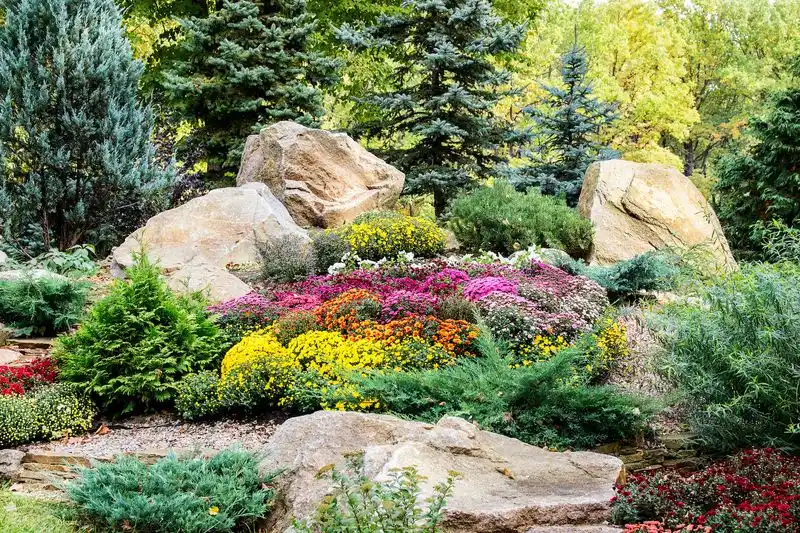
Edible landscapes merge the beauty of a garden with the practicality of food production. Imagine stepping into your garden and picking fresh tomatoes, strawberries, or lettuce. This fusion of aesthetics and function allows you to enjoy the visual delight of plants and their delicious fruits. It’s a rewarding experience that engages all the senses, from the vibrant colors to the tantalizing tastes. Even small spaces can accommodate an edible landscape with the right planning. Such gardens encourage sustainable practices and provide a direct connection to the food you eat, enriching your lifestyle and health.
Wildlife-Friendly Features
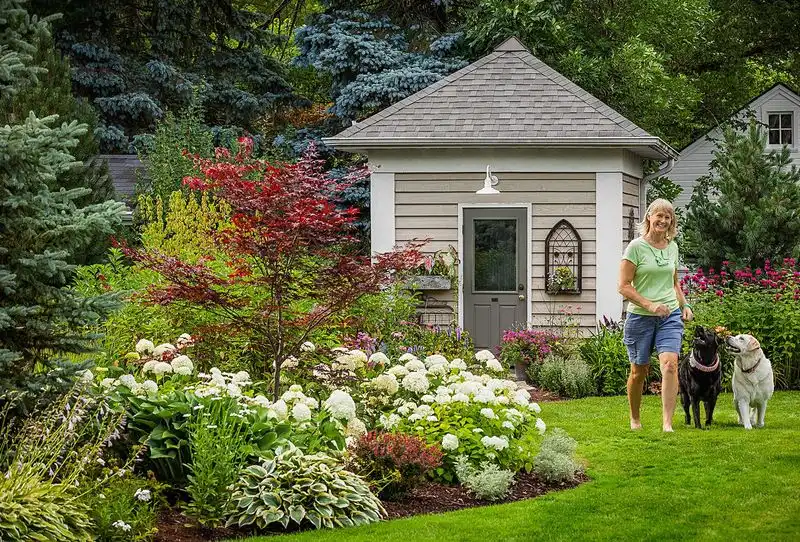
Creating a wildlife-friendly garden introduces a dynamic, living element to your space. By adding bird feeders, butterfly-friendly flowers, and even small water features, you invite nature to coexist with you. This interaction can be incredibly rewarding, offering opportunities to observe and connect with local fauna. Such features transform a static garden into a lively ecosystem, where each visit by a bird or butterfly becomes a moment of joy. It fosters an appreciation for biodiversity and the interconnectedness of life. Plus, it supports local wildlife populations, contributing positively to the environment.
Shade and Shelter
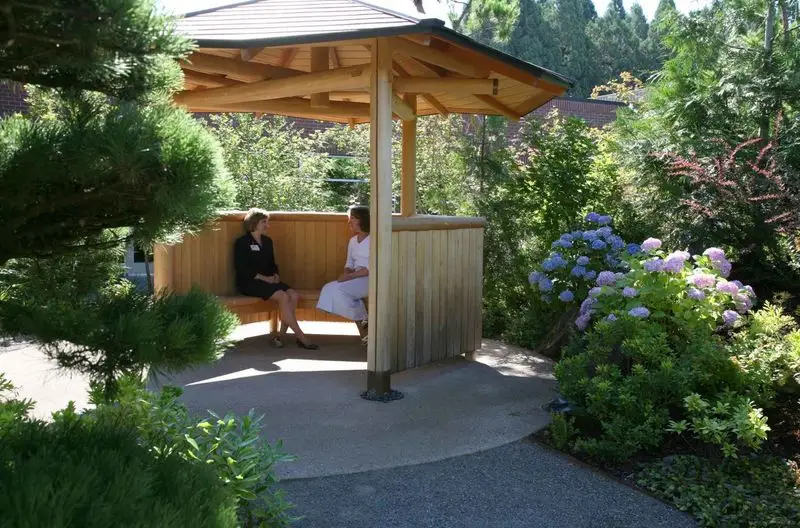
Providing shade and shelter can greatly enhance the comfort of your garden space. Structures such as pergolas, trellises, or simple shade cloths create a cozy atmosphere, making it inviting even during hot days. Climbing plants like wisteria or roses can add a layer of natural beauty and fragrance to these structures. The interplay of light and shadow beneath these canopies creates a serene setting, ideal for relaxation or social gatherings. These elements not only offer physical comfort but also an aesthetic appeal, blending functionality with the tranquil allure of nature.
Seasonal Color Palettes

Creating a garden that changes with the seasons offers a dynamic visual experience. By selecting plants that bloom at different times, your garden will display a continuous array of colors throughout the year. Picture a path that transitions from the vibrant blooms of spring tulips to the warm hues of autumn chrysanthemums. This revolving palette keeps the garden engaging and fresh, ensuring there’s always something new to appreciate. It’s a delightful way to celebrate the cycles of nature and maintain interest in your garden regardless of the season. Each change brings a renewed sense of wonder.
Multi-Level Planting
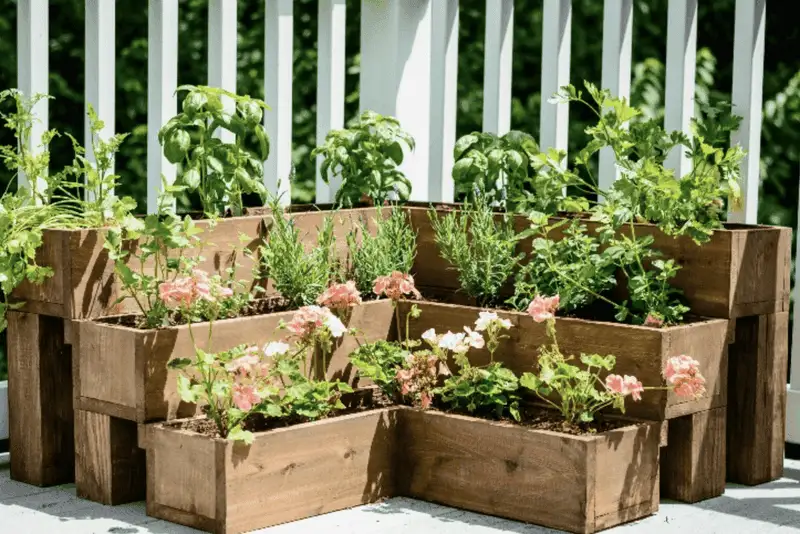
Multi-level planting can add depth and drama to any garden space. By arranging plants at varying heights, from ground covers to towering shrubs or small trees, you create an intricate landscape. This technique maximizes space, making a small garden feel larger and more diverse. The different levels can also offer varied habitats for wildlife, adding to the garden’s ecological value. It’s an approach that brings both visual interest and functionality, allowing more plant diversity. Multi-level gardens invite exploration and offer different perspectives, each layer presenting its own unique charm.
Art in the Garden

Incorporating art into your garden can elevate the aesthetic experience to a new level. Sculptures, wind chimes, or mosaics can complement the natural beauty of your plants, creating a harmonious blend of art and nature. These elements provide focal points and can evoke emotion or tell a story as you wander through your space. Art in gardens encourages creativity and personal expression, making each visit a unique experience. The interplay between the organic and the artistic fosters a unique ambiance, where creativity flourishes alongside nature’s own artistry. It’s a fusion that delights and inspires.
Personalized Seating Areas
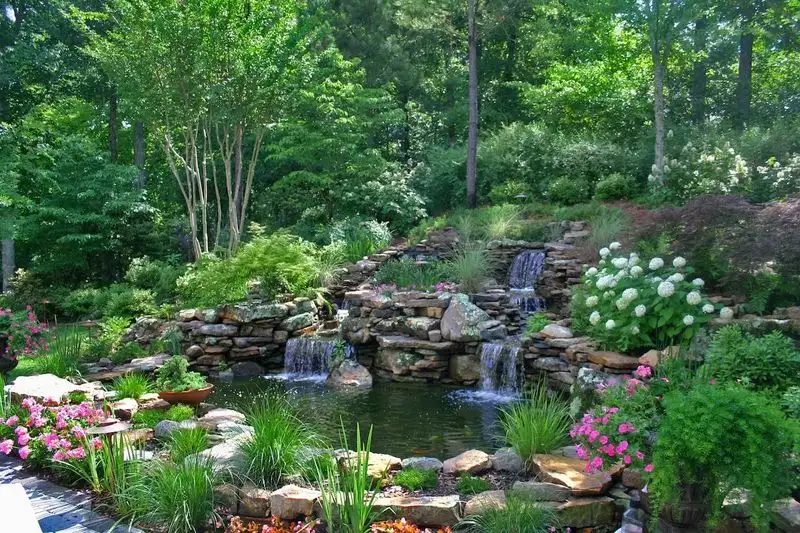
A thoughtfully designed seating area can become the heart of your therapeutic garden. Imagine a cozy nook with a comfortable chair or bench, surrounded by greenery and blooms. This personal retreat invites you to pause, unwind, and enjoy your surroundings. Consider adding soft cushions, a small table for tea, or even a canopy for shade. The seating area becomes a place of relaxation and reflection, where you can immerse yourself in the beauty of your garden. It’s about creating a space that feels like an extension of yourself, tailored to your comfort and needs.

